White Goods Recycle in Garden Clearance
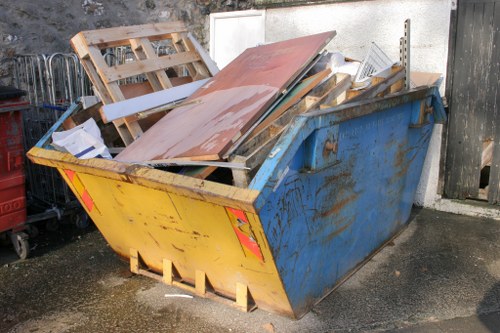
When it comes to garden clearance, one of the most significant tasks homeowners face is the disposal of old white goods. These appliances, including refrigerators, washing machines, and dishwashers, often occupy valuable space and can be challenging to dispose of responsibly. However, recycling white goods during garden clearance not only declutters your space but also contributes to environmental sustainability.
Recycling white goods involves the careful handling and processing of large household appliances to ensure they are disposed of in an eco-friendly manner. This process helps in conserving natural resources, reducing landfill waste, and minimizing the carbon footprint associated with manufacturing new appliances.
In this comprehensive guide, we will explore the best practices for white goods recycling in garden clearance, the benefits it offers, and how you can effectively incorporate it into your garden clearance plans.
Why Recycle White Goods?
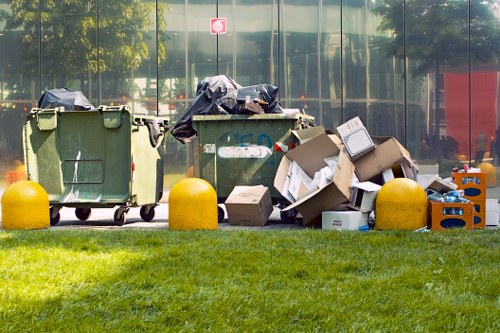
Recycling white goods is essential for several reasons. Firstly, these appliances contain valuable materials such as metals, plastics, and electronics that can be reclaimed and reused in the production of new products. By recycling, you help conserve these finite resources and reduce the demand for virgin materials.
Secondly, improper disposal of white goods can lead to environmental pollution. Many of these appliances contain hazardous substances like refrigerants and heavy metals, which can contaminate soil and water if not handled correctly. Recycling ensures that these harmful components are safely extracted and disposed of, mitigating their impact on the environment.
Moreover, recycling white goods can contribute to reducing greenhouse gas emissions. Manufacturing new appliances from recycled materials typically requires less energy compared to producing them from raw materials. This energy savings translates into lower carbon emissions, aiding in the fight against climate change.
Steps to Recycle White Goods During Garden Clearance
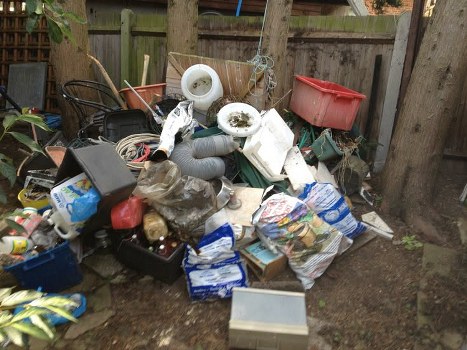
Recycling white goods as part of your garden clearance process involves several key steps. By following these steps, you can ensure that your appliances are disposed of responsibly and efficiently.
1. Identify Items for Recycling:
Begin by identifying all the white goods that need to be removed from your garden. This may include old refrigerators, washing machines, dryers, dishwashers, and other large appliances. Make an inventory of these items to streamline the recycling process.
2. Choose a Recycling Service:
Select a reputable recycling service that specializes in white goods disposal. Look for companies that are certified and adhere to environmental regulations. Local councils often provide information on approved recycling centers and services.
- Research online for local recycling providers.
- Check customer reviews and ratings.
- Ensure the service is licensed and certified.
3. Prepare Appliances for Recycling
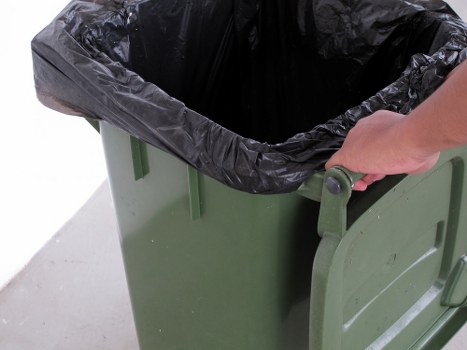
Before handing over your white goods to the recycling service, it’s important to prepare them appropriately:
- Disconnect all appliances from power sources.
- Remove any detachable parts, such as shelves and drawers.
- Secure loose components to prevent damage during transportation.
- Ensure that appliances are clean to facilitate recycling processes.
Proper preparation not only ensures a smoother recycling process but also enhances the efficiency of material recovery.
4. Schedule Pick-Up or Drop-Off:
Arrange for the collection or drop-off of your white goods. Many recycling services offer convenient pick-up options, saving you time and effort. If you prefer to drop off the appliances yourself, ensure you follow the guidelines provided by the recycling center.
Benefits of Recycling White Goods
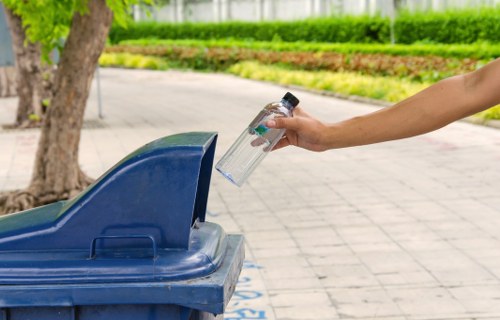
Recycling white goods offers numerous benefits that extend beyond individual convenience. Here are some of the key advantages:
- Environmental Protection: Recycling reduces the amount of waste sent to landfills and minimizes the extraction of raw materials.
- Resource Conservation: Reclaimed materials from white goods can be reused in manufacturing, conserving natural resources.
- Energy Efficiency: The recycling process often consumes less energy compared to producing new appliances from scratch.
- Economic Benefits: Recycling creates job opportunities in the collection, processing, and manufacturing sectors.
- Compliance with Regulations: Proper recycling ensures adherence to environmental laws and regulations, avoiding potential fines.
Environmental Impact

The environmental impact of recycling white goods cannot be overstated. By diverting these appliances from landfills, you prevent the release of toxic substances into the environment. Additionally, recycling reduces the need for mining new metals and extracting other raw materials, thereby preserving natural habitats and biodiversity.
Moreover, recycling helps in the reduction of greenhouse gas emissions. As previously mentioned, the energy savings from using recycled materials contribute to lower carbon footprints, supporting global efforts to combat climate change.
In essence, recycling white goods plays a critical role in promoting sustainable living and protecting our planet for future generations.
Choosing the Right Recycling Service

Selecting the right recycling service is crucial to ensure that your white goods are handled responsibly. Here are some factors to consider when making your choice:
- Certification and Licensing: Ensure the recycling service is certified and complies with local and national regulations.
- Reputation: Look for reviews and testimonials from previous customers to gauge the service’s reliability.
- Services Offered: Some services may offer additional benefits such as free pick-up, on-site inspection, or same-day service.
- Transparency: A reputable service will provide clear information about their recycling processes and how materials are handled.
- Cost: Compare prices among different providers to find a service that fits your budget without compromising on quality.
Taking the time to research and select the right recycling service ensures that your white goods are disposed of in the most efficient and environmentally friendly way possible.
Local vs. National Services

When choosing a recycling service, you might consider whether to go with a local or national provider. Local services often offer more personalized customer support and may be more flexible with scheduling. They also reduce transportation distances, which can further minimize the environmental impact.
On the other hand, national services may have more extensive resources and a broader network of recycling centers, potentially offering more comprehensive services. Consider your specific needs and preferences when deciding between local and national recycling services.
Regardless of your choice, ensure that the service you select aligns with your environmental values and provides the necessary support for effective white goods recycling.
Preparing for Garden Clearance

Effective garden clearance requires careful planning and organization, especially when it involves disposing of white goods. Here are some tips to help you prepare:
- Create a Checklist: List all the items that need to be cleared, including white goods and other garden equipment.
- Schedule Adequate Time: Allocate sufficient time for the clearance process to avoid rushing and ensure everything is handled properly.
- Gather Necessary Tools: Equip yourself with tools such as gloves, screwdrivers, and packing materials to facilitate the removal of appliances.
- Sort Items: Separate items that can be recycled from those that need to be disposed of differently.
By preparing in advance, you can streamline the garden clearance process and ensure that all white goods are recycled efficiently.
Proper preparation is the foundation of a successful garden clearance.
Safety Precautions

Handling white goods during garden clearance involves certain safety risks. It’s important to adhere to safety precautions to prevent accidents and injuries:
- Disconnect Power: Ensure all appliances are unplugged before attempting any removal or handling.
- Use Protective Gear: Wear gloves, safety goggles, and sturdy footwear to protect yourself from sharp edges and heavy components.
- Lift Properly: Use correct lifting techniques or seek assistance when moving heavy appliances to avoid back injuries.
- Avoid Hazardous Materials: Be cautious of any hazardous materials within appliances and handle them according to safety guidelines.
Following these safety measures ensures a secure and efficient garden clearance process.
Environmental Regulations and Compliance

Recycling white goods is subject to various environmental regulations aimed at protecting public health and the environment. Compliance with these regulations is essential to avoid legal repercussions and ensure responsible disposal.
- Waste Electrical and Electronic Equipment (WEEE) Directive: This EU directive mandates the proper disposal and recycling of electronic waste, including white goods.
- The Resource Conservation and Recovery Act (RCRA): In the United States, RCRA governs the management of hazardous and non-hazardous waste, including large appliances.
- Local Council Regulations: Many local governments have specific rules regarding the disposal and recycling of white goods. It’s important to familiarize yourself with these regulations to ensure compliance.
Understanding and adhering to these regulations ensures that your white goods recycling efforts are both legal and environmentally responsible.
Staying Informed: Regularly update yourself on changes in environmental laws and recycling guidelines to maintain compliance.
Benefits of Compliance

Complying with environmental regulations offers several benefits:
- Environmental Protection: Ensures that hazardous materials are handled safely, reducing environmental impact.
- Legal Assurance: Avoids fines and legal issues associated with non-compliance.
- Enhanced Reputation: Demonstrates your commitment to environmental responsibility, which can enhance your reputation among peers and the community.
- Economic Savings: Proper recycling can sometimes lead to financial incentives or savings through tax breaks and reduced disposal costs.
Compliance is not just a legal obligation but also a step towards sustainable living and environmental stewardship.
Innovative Recycling Methods

The recycling industry is continuously evolving with innovative methods that enhance the efficiency and effectiveness of recycling white goods. Here are some of the latest advancements:
- Automated Dismantling: Advanced machinery can disassemble appliances more quickly and accurately, ensuring that materials are sorted correctly for recycling.
- Chemical Recycling: This method breaks down materials at the molecular level, allowing for the recovery of high-purity components that can be reused in manufacturing.
- Waste-to-Energy: Some recycling processes convert non-recyclable parts of white goods into energy, providing a sustainable way to manage waste.
- Blockchain Tracking: Utilizing blockchain technology ensures transparency and traceability throughout the recycling process, enhancing accountability and trust.
These innovative methods are revolutionizing white goods recycling, making it more efficient and environmentally friendly.
Benefits of Technological Advancements

Technological advancements in recycling bring multiple benefits:
- Increased Efficiency: Automation and advanced machinery speed up the recycling process, handling larger volumes with greater precision.
- Higher Recovery Rates: Improved sorting and processing technologies ensure that more materials are reclaimed and reused.
- Reduced Environmental Impact: Cleaner and more efficient recycling processes minimize emissions and waste.
- Cost Savings: Enhanced technologies can lower operational costs, making recycling services more affordable for consumers.
Embracing these advancements leads to a more sustainable and effective recycling ecosystem.
DIY Vs. Professional Recycling

When it comes to recycling white goods, homeowners often face the choice between doing it themselves (DIY) or hiring professional services. Each approach has its advantages and considerations.
- DIY Recycling: This option can be cost-effective and offers flexibility in scheduling. However, it requires knowledge of proper disposal methods and access to appropriate recycling facilities.
- Professional Recycling: Hiring professionals ensures that your white goods are disposed of responsibly and in compliance with regulations. Professionals also handle the heavy lifting and logistics, providing a hassle-free experience.
For most homeowners, especially those dealing with multiple or large appliances, professional recycling is the recommended choice for its convenience and reliability.
Choosing the right method depends on your specific needs, resources, and commitment to environmental responsibility.
When to Opt for Professional Services

Professional recycling services are particularly beneficial in the following scenarios:
- You have multiple or bulky white goods that require special handling.
- You lack the necessary tools or transportation to move large appliances.
- You want to ensure compliance with environmental regulations.
- You prefer a hassle-free process with guaranteed recycling outcomes.
- You seek additional services such as secure data destruction for electronics.
In these cases, professionals provide expertise and resources that are difficult to replicate with DIY methods.
Investing in professional services can save time, effort, and ensure that your white goods are recycled responsibly.
Cost Considerations

The cost of recycling white goods can vary based on several factors, including the type and number of appliances, the chosen recycling method, and the service provider. Understanding these cost factors can help you budget effectively for your garden clearance.
- Service Fees: Recycling services may charge based on the size, weight, and number of appliances. Some providers offer flat-rate pricing for multiple items.
- Transportation Costs: If you opt for pick-up services, transportation fees may apply, especially if the recycling center is far from your location.
- Additional Services: Services such as on-site removal, same-day service, or secure data destruction for electronics may incur extra charges.
- Local Incentives: Some local councils offer free or subsidized recycling services, so it’s worth checking for any available incentives in your area.
By researching and comparing different service providers, you can find a recycling solution that fits your budget while meeting your environmental goals.
Investing in responsible recycling ensures that your white goods are disposed of in an eco-friendly manner, providing long-term benefits for both you and the environment.
Conclusion

Recycling white goods during garden clearance is a crucial step towards responsible waste management and environmental sustainability. By following best practices, choosing the right recycling service, and adhering to safety and regulatory guidelines, you can ensure that your old appliances are disposed of efficiently and responsibly.
The benefits of white goods recycling extend beyond decluttering your garden. They contribute to resource conservation, reduce environmental pollution, and support the global effort to combat climate change. Additionally, professional recycling services offer convenience and assurance that your appliances are handled with care and expertise.
As you plan your next garden clearance, consider incorporating white goods recycling into your strategy. Not only will you create a cleaner and more organized outdoor space, but you will also be making a positive impact on the planet.
Ready to recycle your old white goods? Contact us today to schedule your garden clearance and contribute to a greener, more sustainable future.